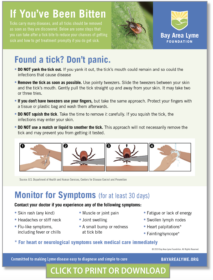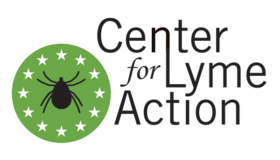Please join us to help spread awareness of Lyme disease and prevention information on all tick-borne diseases. During the month of May, we are focusing on “Fight the Bite” and dispelling two common myths:
1. Tick Attachment Times
There is no safe amount of time for tick attachment. Tick Tock Know the Clock!
Did You Know?
2. Rashes
Less than 20% of people bitten get the “bullseye” rash, and many may never get a rash at all. Rashes come in all shapes and sizes.

Click here for our recent blog about rashes.
Fight the Bite! Why We Need Awareness
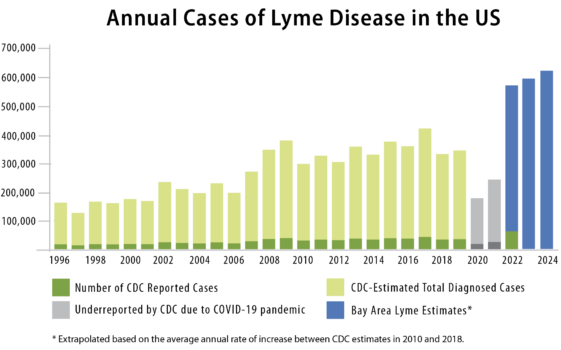 Lyme disease, the fastest-growing vector-borne illness in the US, affects an estimated 620,000+ Americans each year. Symptoms of the first stage of Lyme disease include headaches, flu-like symptoms, joint pain, fatigue, and sometimes a rash with many different shapes, including one that may look like a bullseye centered on the tick bite. People with chronic Lyme disease suffer for years with symptoms that may include paralysis, agonizing joint pain, neurological problems, severe headaches, problems with memory, hearing, and vision, inflammation of the brain, and inflammation of the heart. Due to the difficulty in diagnosing and treating Lyme disease, over two million suffer from its debilitating later-stage symptoms.
Lyme disease, the fastest-growing vector-borne illness in the US, affects an estimated 620,000+ Americans each year. Symptoms of the first stage of Lyme disease include headaches, flu-like symptoms, joint pain, fatigue, and sometimes a rash with many different shapes, including one that may look like a bullseye centered on the tick bite. People with chronic Lyme disease suffer for years with symptoms that may include paralysis, agonizing joint pain, neurological problems, severe headaches, problems with memory, hearing, and vision, inflammation of the brain, and inflammation of the heart. Due to the difficulty in diagnosing and treating Lyme disease, over two million suffer from its debilitating later-stage symptoms.
Listen to and Share our Ticktective™ Podcasts
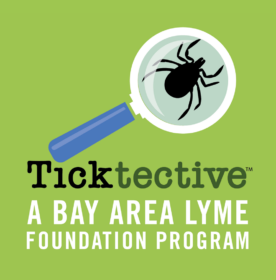 Listen or watch our Ticktective™ Podcast interview with Dan Wolff “Tick Man Dan”, the founder of TickEase tweezers, who discusses his invention, what to do when you find a tick, and the ecology of ticks. Click here to watch the video or listen to the podcast.
Listen or watch our Ticktective™ Podcast interview with Dan Wolff “Tick Man Dan”, the founder of TickEase tweezers, who discusses his invention, what to do when you find a tick, and the ecology of ticks. Click here to watch the video or listen to the podcast.
Ticktective™ podcast series, a Bay Area Lyme Foundation program, investigates the latest scientific knowledge and advances in Lyme and tick-borne diseases and offers an insightful discussion with researchers, physicians, patients, and thought leaders in the field. Listen to other Ticktective™ Podcasts and watch the videos here. They are also available on YouTube here.
Educational Materials
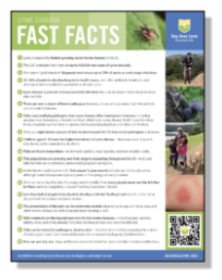 Fast Facts
Fast Facts
Download our flyer containing 18 of the most important facts about Lyme disease prevention. Click here.
How to Remove a Tick
Ticks carry many diseases, and all ticks should be removed as soon as they are discovered. Click here for a 2-page flyer with some steps that you can take after a tick bite to reduce your chances of getting sick and what symptoms to monitor for. On page 2, you’ll learn about important tips for tick-bite prevention.
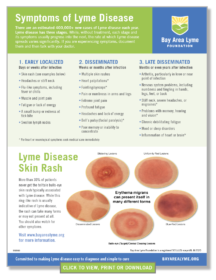 Skin Rashes
Skin Rashes
Erythema migrans (EM, which literally means “expanding rash”) is the hallmark sign of infection with B. burgdorferi. Most rashes occur 3–30 days after infection. However, there are case reports that show EMs can appear sooner than three days post-infection. While many equate a Lyme rash with the bullseye, this is not the definition of an EM. An EM is defined as an expanding annular (round) rash of at least 10cm (2.5in). The rash can take many forms and may have a raised bump in the middle. It can be itchy or warm, and it can have a bluish cast like a bruise. The rash may not be present at all. You should also watch for other symptoms. Click here for a downloadable reference on symptoms and skin rashes. Click here for our recent blog about rashes.
Tick Testing
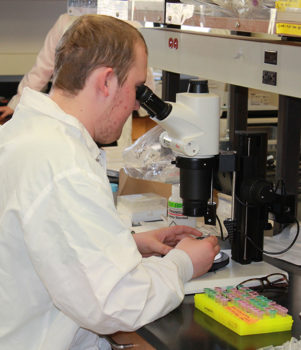 You should strongly consider having your tick tested if:
You should strongly consider having your tick tested if:
- The tick was attached to your body, not simply crawling around
- You live in or have visited a place where there are infected ticks
We recommend the following providers to have your tick tested:
TickReport
www.tickreport.com
Telephone: (413)545-1057
Ticknology
www.ticknology.org
Telephone: (970)305-5587
Click here for more information about tick testing.
We Thank Our Partners in Lyme

